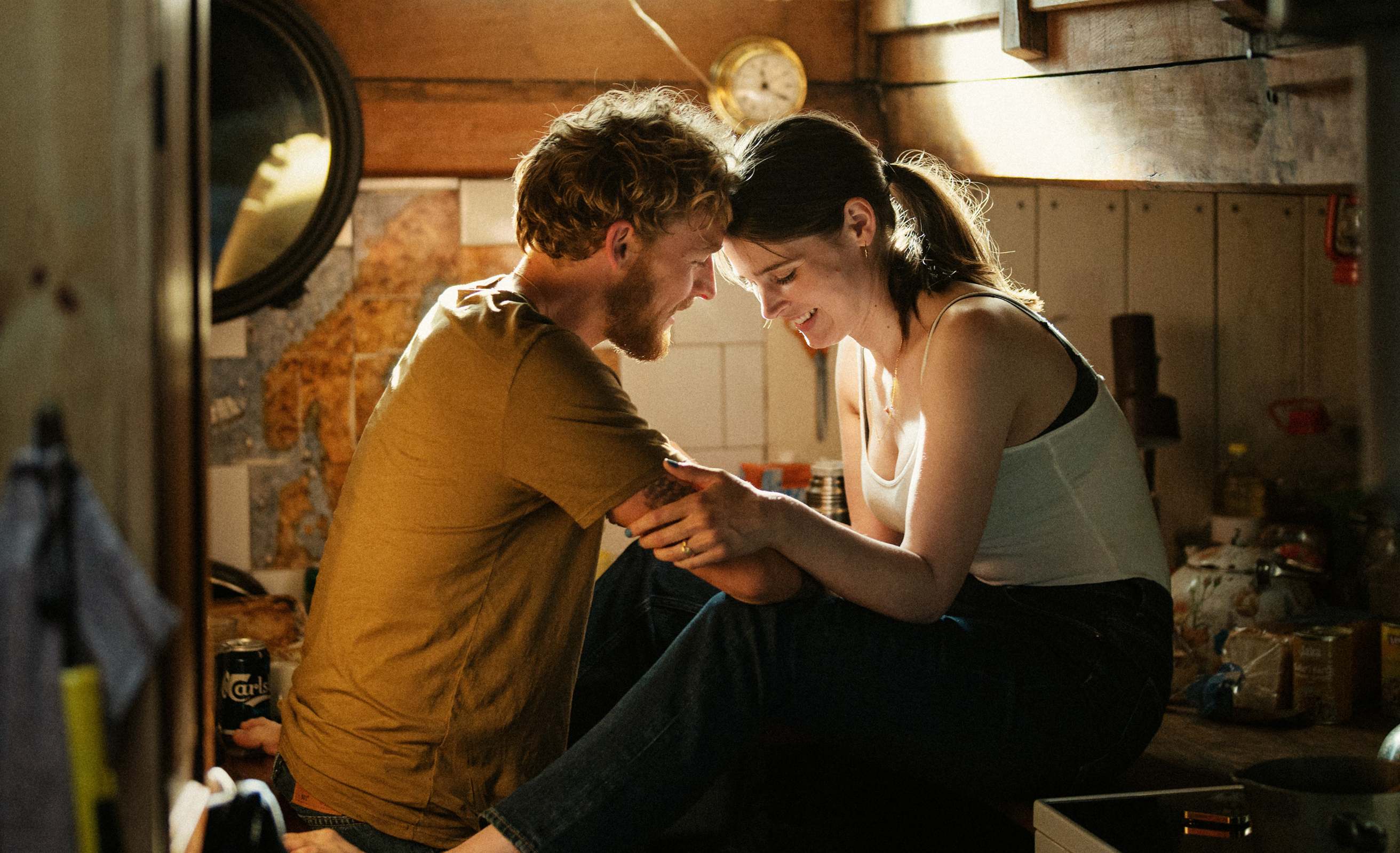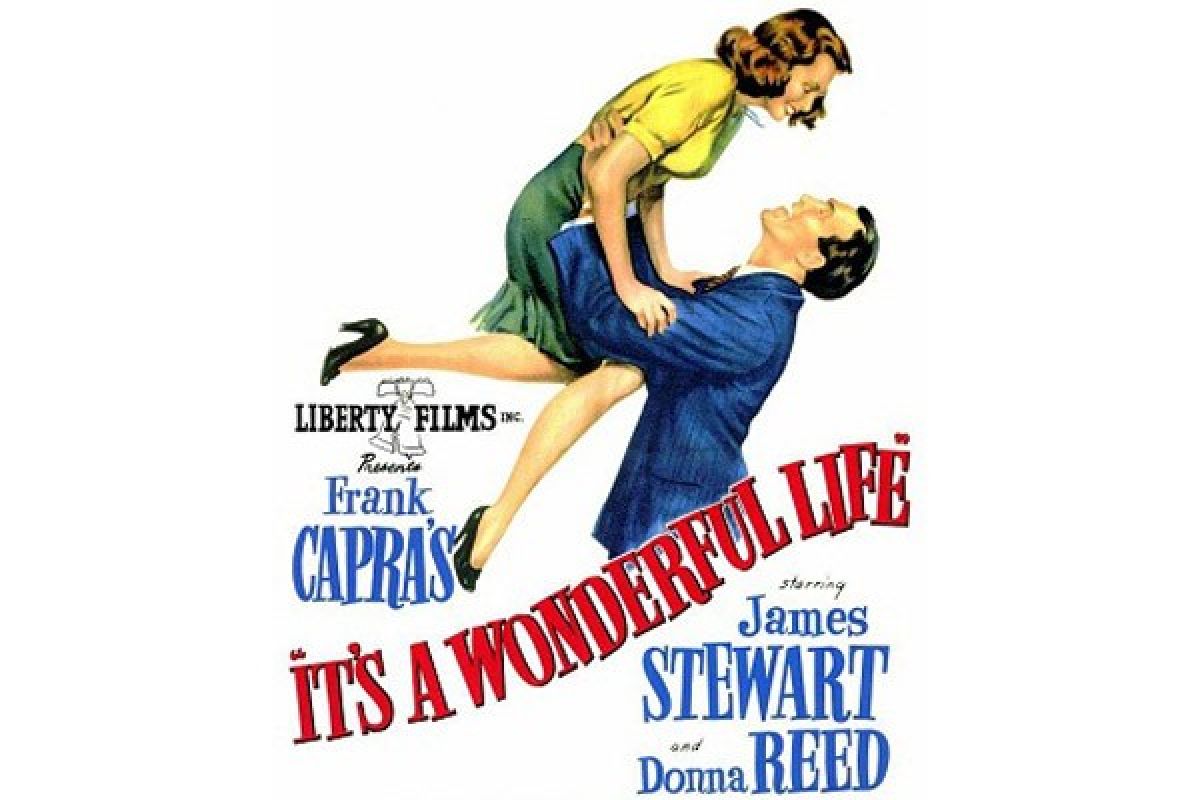Defining “A Beautiful Life” in Cinematic Contexts
The portrayal of a “beautiful life” in cinema is a subjective endeavor, varying greatly depending on cultural context, individual perspectives, and the filmmaker’s artistic vision. However, certain common threads weave through films that successfully evoke this sentiment, offering audiences a glimpse into lives deemed fulfilling and meaningful. These narratives often explore themes of connection, personal growth, and the pursuit of purpose, transcending simple materialistic success.
Films depicting a beautiful life frequently utilize motifs of overcoming adversity, finding love and belonging, and achieving a sense of inner peace. These elements aren’t always presented as flawlessly happy scenarios; instead, the beauty often lies in the journey, the struggles overcome, and the resilience displayed by the characters. The focus tends to shift from external validation to internal contentment, emphasizing the importance of relationships, personal fulfillment, and the appreciation of life’s simple pleasures.
Examples of Films Depicting Fulfilling Lives
Several films effectively illustrate the concept of a beautiful life through diverse narrative structures. For instance, “It’s a Wonderful Life” (1946) uses a fantastical premise to showcase the ripple effect of one man’s life on his community, highlighting the importance of human connection and the inherent value of seemingly ordinary actions. The film’s narrative structure, featuring a pivotal moment of crisis followed by a redemptive journey, powerfully demonstrates how a life filled with love and service can be profoundly beautiful, even amidst hardship. In contrast, “Eat Pray Love” (2010) utilizes a journey of self-discovery, showing the protagonist’s evolution through travel and introspection as she finds peace and fulfillment. This film’s narrative structure, focusing on personal growth and transformation, showcases the beauty of embracing change and finding happiness within oneself. Finally, “Amelie” (2001) employs a whimsical and charming style to portray a life dedicated to bringing joy to others, emphasizing the beauty of kindness and the impact of small acts of generosity. The film’s non-linear narrative allows for a playful exploration of everyday moments that collectively form a picture of a life lived with intention and joy.
Portrayals of Happiness, Success, and Contentment
Filmmakers employ a variety of techniques to portray happiness, success, and contentment. Visual storytelling plays a crucial role; vibrant colors, idyllic settings, and expressive cinematography can contribute to a feeling of warmth and joy. The use of music is equally important; uplifting scores and carefully chosen soundtracks can amplify emotional impact and create a sense of optimism and hope. Beyond visual elements, the narrative itself is paramount. The depiction of strong relationships, the achievement of meaningful goals, and the overcoming of challenges all contribute to the portrayal of a fulfilling life. Furthermore, filmmakers often emphasize moments of quiet reflection, intimacy, and connection, suggesting that true happiness often lies in the simple pleasures and profound relationships that enrich our lives. The nuanced portrayal of these elements, rather than relying on simplistic tropes of wealth or fame, often creates a more authentic and resonant portrayal of a beautiful life.
Country Setting and its Influence on the Narrative

Source: moviewebimages.com
The country setting in film significantly shapes the portrayal of a “beautiful life,” often acting as a powerful narrative device that influences character development, thematic exploration, and overall tone. The idyllic landscapes and slower pace of life commonly associated with rural areas can contrast sharply with the complexities and challenges faced by characters, creating a compelling juxtaposition. Conversely, urban country settings, while possessing a different aesthetic, can still contribute to a unique portrayal of a beautiful life, focusing on community and resilience amidst potentially harsher realities.
The impact of the country setting on the depiction of a beautiful life varies considerably depending on whether the film is set in a rural or urban environment. Rural settings often emphasize themes of simplicity, connection with nature, and self-sufficiency. A beautiful life in this context might be defined by close-knit communities, a strong work ethic, and a deep appreciation for the natural world. In contrast, urban country settings might highlight themes of community resilience, social justice, and the struggle for survival against economic hardship. A beautiful life in this context could be characterized by acts of kindness, shared struggles, and the strength found in collective action.
Rural Country Settings and the Portrayal of a Beautiful Life
Rural settings frequently utilize visual elements like expansive fields, rolling hills, and quaint farmhouses to evoke a sense of tranquility and peace. These images contribute to the narrative by suggesting a life free from the pressures of urban existence. The symbolism is often tied to themes of growth, harvest, and the cyclical nature of life, mirroring the characters’ journeys and personal transformations. Films like “October Sky” (1999), though set in a coal mining town, still utilizes the expansive landscapes of rural West Virginia to underscore the dreams and aspirations of its characters despite their harsh environment. The contrast between the beauty of the natural world and the grit of their daily lives enhances the narrative’s emotional impact, portraying a “beautiful life” not as an absence of hardship, but as a triumph over adversity.
Urban Country Settings and the Depiction of a Beautiful Life
In contrast to rural settings, urban country environments, such as small towns or close-knit communities within larger cities, present a different visual landscape. The imagery might include bustling town squares, modest homes clustered together, and community centers that serve as vital hubs of activity. These visual elements often contribute to a sense of shared experience and collective identity. Films such as “Nomadland” (2020), though focusing on the nomadic lives of its characters, show glimpses of beautiful moments of connection within small communities, highlighting the resilience and strength found in human relationships during challenging times. This depiction of a “beautiful life” emphasizes the power of human connection and shared experiences even amidst economic hardship and displacement.
Symbolism and Visual Elements in Country Settings
The symbolism used to represent the country setting and its contribution to the overall message varies widely depending on the specific film. For example, a weathered barn might symbolize resilience and the passage of time, while a vibrant sunrise could represent hope and new beginnings. Similarly, a winding country road could represent the journey of life, with its twists and turns reflecting the challenges and triumphs along the way. The director’s choice of visual elements, including color palettes, lighting, and camera angles, plays a crucial role in shaping the viewer’s perception of the country setting and its significance to the narrative. The use of natural light and warm colors, for instance, can create a sense of warmth and nostalgia, while darker, more muted tones might reflect a sense of hardship or isolation.
Character Development and the Pursuit of a Beautiful Life

Source: futurecdn.net
Protagonists in films portraying a “beautiful life,” particularly within a country setting, often share common traits that contribute to their fulfilling existence. These characters typically exhibit resilience, a strong connection to nature and community, and a deep-seated sense of purpose, even amidst challenges. Their journeys often involve overcoming adversity, learning valuable life lessons, and ultimately finding contentment and meaning in their simple yet rich lives.
The pursuit of a beautiful life in cinematic narratives often involves a clear character arc, showcasing growth and transformation. This isn’t necessarily a journey to riches or fame, but rather a progression toward self-acceptance, personal fulfillment, and a stronger connection to something larger than oneself. These arcs often involve facing internal conflicts, making difficult choices, and experiencing both triumphs and setbacks that ultimately shape their understanding of what constitutes a meaningful life.
Character Arcs Demonstrating a Fulfilling Existence, A beautiful life movie country
Examples of compelling character arcs in films depicting a beautiful life often involve a protagonist initially grappling with disillusionment or dissatisfaction with a fast-paced urban existence. They might be driven by external pressures or internal conflicts, leading them to seek solace and purpose in a simpler country life. The process of adapting to this new environment, forging connections with nature and community, and confronting personal demons often forms the core of their transformation. For instance, a character might initially struggle with the isolation of rural life, but gradually find a sense of belonging through community involvement and developing deep relationships with the land and its people. Their journey becomes a testament to the transformative power of nature, community, and self-discovery. Another example could be a city-dweller who inherits a dilapidated farm and, through hard work and perseverance, restores it to its former glory, finding fulfillment in the process and discovering a deep connection to the land.
Fictional Character Embodying a Beautiful Life in a Country Setting
Elara Vance is a former journalist who, after experiencing burnout from the high-pressure world of city journalism, inherits her grandmother’s remote farm in the Appalachian Mountains. Elara is initially overwhelmed by the solitude and the physical demands of farm life, but her inherent resilience and love for nature begin to shine through. She possesses a quiet strength and an unwavering determination. While initially reserved and somewhat cynical, her interactions with the close-knit community surrounding the farm gradually soften her heart, fostering a sense of belonging she never experienced in the city. Her character arc involves learning to embrace the rhythms of nature, finding joy in simple tasks like tending her garden and caring for her animals, and developing deep connections with the people around her. She ultimately finds peace and purpose in her new life, demonstrating that a beautiful life can be found not in material wealth or professional success, but in a genuine connection with the land, community, and oneself. Her story is a testament to the restorative power of nature and the importance of human connection in achieving a fulfilling life.
Visual Storytelling and Cinematic Techniques
The visual language of cinema plays a crucial role in shaping the audience’s perception of a “beautiful life,” particularly within a country setting. Cinematography, lighting, and color palettes work in concert to evoke specific emotions and immerse the viewer in the narrative’s world. By carefully manipulating these elements, filmmakers can create a powerful sense of peace, joy, and contentment, enhancing the overall impact of the story.
The use of specific cinematic techniques further amplifies the emotional resonance of scenes depicting happiness and contentment. These techniques, when skillfully employed, can transform a simple scene into a memorable and emotionally affecting experience for the audience. The interplay between visual elements and narrative creates a holistic experience that transcends mere storytelling and becomes a deeply felt emotional journey.
Cinematic Techniques Enhancing Emotional Impact
The following table details specific cinematic techniques frequently used to enhance the emotional impact of scenes portraying happiness and contentment in a rural setting. The examples provided are illustrative and not exhaustive, reflecting a range of stylistic approaches.
| Technique | Description | Example Film (Illustrative) | Effect on the Viewer |
|---|---|---|---|
| Long Takes | Extended, uninterrupted shots that allow the viewer to fully immerse themselves in the scene’s atmosphere and details. | The Godfather Part II (certain scenes depicting family life) | Creates a sense of calm and allows for a deeper appreciation of the environment and characters’ emotions. |
| Golden Hour Lighting | Utilizing the soft, warm light of the hour after sunrise or before sunset. | Once Upon a Time in the West | Evokes feelings of nostalgia, romance, and tranquility; often associated with idyllic settings. |
| Shallow Depth of Field | A technique that blurs the background, focusing attention on the subject and creating a sense of intimacy. | Brokeback Mountain (scenes depicting the protagonists’ shared moments) | Highlights the importance of the subject matter and creates a more intimate and emotional connection with the viewer. |
| Warm Color Palette | Dominance of warm colors like yellows, oranges, and reds to create a feeling of warmth, happiness, and comfort. | A River Runs Through It (scenes depicting fly fishing and family life) | Promotes feelings of joy, contentment, and a sense of belonging. |
A Sunset Scene: Visualizing Peace and Tranquility
The sun dips below the horizon, painting the sky in a breathtaking spectacle of color. A vibrant orange bleeds into soft pinks and purples, casting long shadows across the rolling fields of wheat. The golden light bathes the landscape in a warm glow, illuminating the distant farmhouse nestled amongst the trees. A gentle breeze rustles through the tall grass, creating a soothing whisper that carries the scent of freshly cut hay. The air is still and quiet, broken only by the chirping of crickets and the distant bleating of sheep. The camera focuses on a lone figure sitting on a weathered fence post, silhouetted against the fiery sky, their face bathed in the soft, ethereal light of the setting sun. The overall effect is one of profound peace and tranquility, a visual representation of a life lived simply and beautifully. The use of warm, saturated colors emphasizes the serenity of the scene, while the long, slow pan across the landscape enhances the viewer’s sense of immersion and connection to the rural setting. The gentle movement of the camera mirrors the calmness of the scene, avoiding any jarring or disruptive elements. The lighting, a mix of the strong sunset hues and the soft shadows, creates a sense of depth and visual interest, while the focus on the solitary figure adds a touch of contemplative melancholy that enhances the overall feeling of quiet reflection and peace.
Cultural Representations and National Identities

Source: antaranews.com
The concept of “a beautiful life,” as depicted in cinema, is deeply intertwined with the cultural values and societal norms of the nation producing the film. A comparative analysis reveals striking differences in how various cultures define and portray this ideal, reflecting their unique histories, traditions, and aspirations. These cinematic representations offer valuable insights into national identities and the evolving values of a society.
The portrayal of a beautiful life varies significantly across national cinemas. For instance, films from Scandinavian countries often emphasize themes of community, environmental harmony, and a balanced work-life integration, reflecting a societal emphasis on social welfare and sustainable living. In contrast, films from some East Asian nations may prioritize themes of familial duty, personal sacrifice, and the pursuit of academic or professional excellence, reflecting cultural values that emphasize collectivism and hierarchical structures. Bollywood films, representing India, frequently feature elaborate musical numbers and romantic narratives, showcasing a vibrant cultural landscape and celebrating family and community ties. American cinema, particularly Hollywood, often presents a more individualistic perspective, emphasizing personal achievement, material success, and the pursuit of happiness through romantic love and self-discovery. These diverse depictions highlight the multifaceted nature of the concept itself, demonstrating that the “beautiful life” is not a universal, singular ideal but rather a culturally constructed concept.
Contrasting Depictions of a Fulfilling Life
Films from different countries offer diverse perspectives on what constitutes a fulfilling life. A comparison between a typical Japanese film focusing on the quiet dignity of an aging artisan meticulously crafting traditional objects and a Hollywood blockbuster centered around a high-powered executive achieving immense financial success illustrates this point clearly. The Japanese film might emphasize the beauty found in dedication to craft, intergenerational connection, and the acceptance of life’s natural cycle, while the Hollywood film would likely highlight the thrill of ambition, individual achievement, and the pursuit of material wealth. These contrasting depictions reflect differing cultural values: the emphasis on tradition and community versus individual achievement and ambition. This difference in emphasis fundamentally shapes the narrative structure, character development, and overall message conveyed by each film.
National Identity and Societal Values Reflected in Cinematic Portrayals
National identity and societal values are often powerfully reflected in the cinematic portrayal of a beautiful life. For example, films from post-war Germany might explore themes of reconciliation, forgiveness, and the rebuilding of society after a period of immense trauma. The narratives would likely focus on overcoming adversity, finding meaning in everyday life, and fostering community bonds. This contrasts sharply with films from countries that have experienced prolonged periods of political stability and economic prosperity, which might focus on individual aspirations, personal freedom, and the pursuit of leisure and enjoyment. The themes emphasized in these films – whether it’s resilience, ambition, or community – directly mirror the values and experiences shaping the national identity of the country in question. The choice of setting, the character’s motivations, and the resolution of the narrative all contribute to this reflection.
Common Queries: A Beautiful Life Movie Country
A beautiful life movie country – What are some common criticisms of films depicting “a beautiful life”?
Common criticisms include unrealistic portrayals of happiness, a lack of diversity in representing “beautiful lives,” and the potential for romanticizing idealized versions of reality, ignoring societal complexities.
How do economic factors influence the portrayal of a beautiful life in film?
Economic factors can significantly influence the depiction of a beautiful life, with wealth often associated with happiness and contentment, though films may also explore alternative perspectives on the relationship between material possessions and fulfillment.
What role does music play in creating the atmosphere of a “beautiful life” in film?
Music plays a crucial role in establishing mood and enhancing emotional impact. Carefully selected soundtracks can reinforce feelings of peace, joy, and contentment, contributing significantly to the overall atmosphere.
How does technology impact the visual representation of a beautiful life in modern cinema?
Technological advancements in filmmaking, such as high-definition cameras and advanced visual effects, allow for more nuanced and visually stunning representations of landscapes and characters, enhancing the emotional impact of scenes portraying a beautiful life.